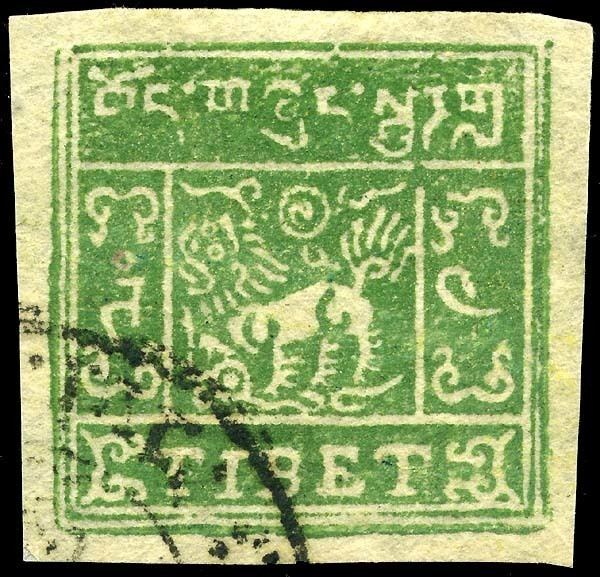 | ||
This is a survey of the postage stamps and postal history of Tibet.
Contents
Foreign stamps
The first adhesive stamps issued for use in Tibet were typewritten overprints on Indian postage stamps through the 1903 period, during which the Tibetan Frontier Commission, led by Sir Francis Younghusband, arrived in Khamba Jong on July 7, 1903. Soon after, as no progress was made in diplomatically settling issues of the Tibetan border with Sikkim, this became a military expedition. One result of the treaty signed September 7, 1904 was the establishment of Indian Postal Agencies at Gartok, in Western Tibet, and Gyantse, Pharijong and Yatung, along the Indian trade route to Lhasa. Chinese forces occupied Tibet in 1909, when the Dalai Lama fled into Sikkim and India. However, there were Chinese communities in Tibet well before this, as shown by a registered letter from Wen Tsung-yao at Lhasa, January 9, 1909. Thereafter, Chinese stamps and special Chinese date stamps were used at Chabdo, Gyantse, Lhasa, Pharijong, Shigatse and Yatung. Postal communications of this period are scarce and eagerly sought after by both Chinese and Tibetan specialists.
First stamps of Tibet
Tibet began issuing postage stamps at the beginning of the 20th century. The first stamps were issued in Lhasa in 1912. Other series of stamps were issued in 1914, 1933, and through the end of the 1950s.
Tibetan stamps had a figure of a snowlion, the national emblem of Tibet. The stamps were marked in Tibetan characters meaning "Tibet Government" and in English by "Tibet".
Fakes and forgeries
Collectors and philatelists encounter many fakes and forgeries of both Tibetan stamps and cancellations. Genuine postally used material also has been produced for collectors.
